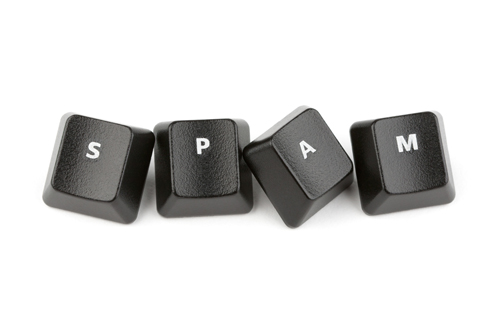
Spam emails can not only be annoying, but can also waste huge amounts of professional time and therefore incur massive costs for businesses.
As scammers become more sophisticated their emails are becoming more realistic, and it’s becoming increasingly difficult to discern these con artists from genuine emails. However, by following a few simple rules you can minimize the risks.
1. Hide your e-mail address from people you don’t know
Listing your email address on a blog or social media page is another way in which spammers can pick up your address.
Spammers will usually look for a pattern within the email addresses, so try writing your email in a way which will fool them such as writing it in long form replacing the @ for at and the full stop for dot.
2. Don’t reply
Resist the urge to get angry and don’t reply to any spam e-mails. Instead of having the desired effect and reducing your spam, replying to the e-mail lets the spammer know that your email account is active. You may therefore be subject to more spam rather than less.
If you can tell from the subject line that a message is spam, don’t open it- delete it or send it to your junk files. Spam subject lines typically promise you something that is unrealistic, and use attention-grabbing punctuation such as exclamation marks or capitals.
3. Block don’t unsubscribe
Try to avoid clicking on the link to unsubscribe to the e-mail, as this will confirm to the spammer that the e-mail has reached you. Set up a junk folder and send all spam there to avoid getting confused.
Clicking on the links on possible spam emails will also in some cases let the spammer know not only that your email address is valid, but also that you are likely to click on links, which could mean you are more likely to be targeting with more spam or phishing emails.
4. Manage junk effectively
Most email providers have options to set up a spam filter, which will automatically catch obvious unsolicited commercial email messages and move them to your junk folder.
Once you have found an email which is obviously spam, it is also a good idea to add the email to a blocked senders list, which will mean that you will no longer receive emails from them.
5. Have a disposable email address
There are lots of online services that require you to sign up using an email address, which can often lead to being on the receiving end of spam emails.
One way to get round this is to create a separate email account using a free service such as Gmail or Yahoo! that you can then use to sign up with without having your permanent email account held to ransom.
6. Watch out for checkboxes
When you sign up for something on the web, there is often some innocent looking text with a tick box asking if you would like to be contacted by third parties.
Quite often these boxes are already ticked, but if you leave them like that it gives the company free reign to pass on your details to other companies, which then may be used to send spam.
7. If it sounds to good to be true, it probably is
One problem can be knowing whether the spam you’ve received is legitimate or not.
Recently these spam e-mails have begun to sound more and more legitimate, and it has reached a stage where the only thing that a layman would notice is the fact the language used isn’t native English.
Our advice is to always ignore emails like this, as if they sound too good to be true they probably are, and never work with a company unless you are 100% certain that they are reputable by doing your research first.













